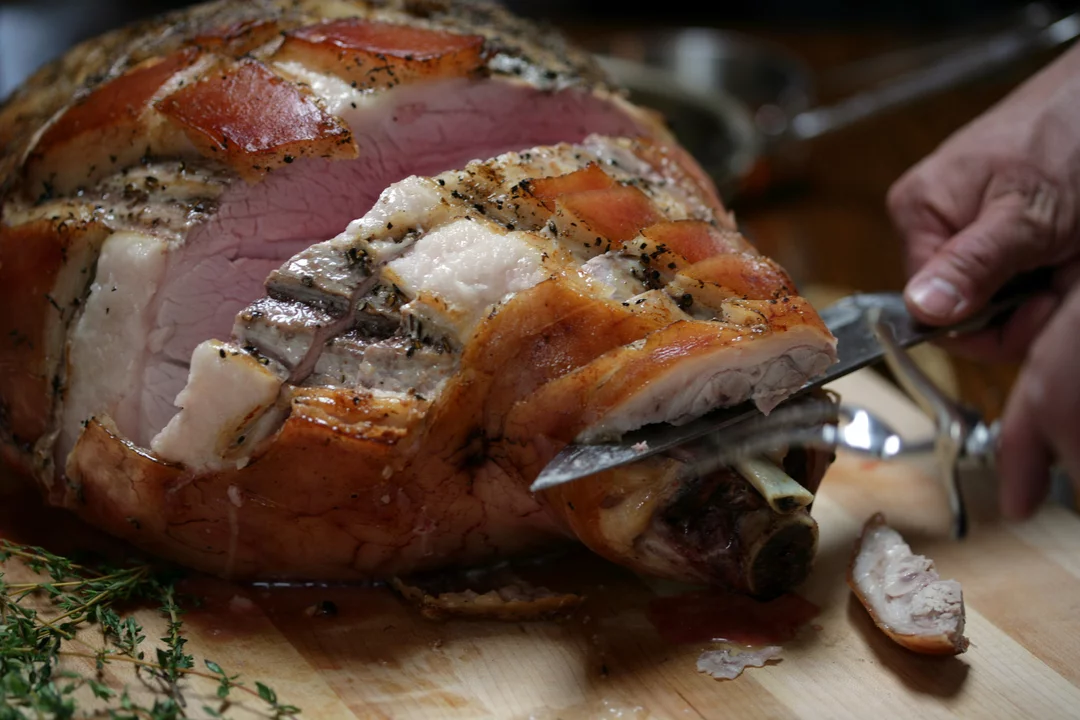Choosing the Perfect Fresh Ham
Before we dive into cooking your fresh ham, it's essential to know what to look for when selecting the perfect piece. There are a few factors you should consider: the size, the cut, and the quality. The size of the fresh ham will depend on how many people you are planning to serve. A general rule of thumb is to allocate 1/2 to 3/4 pound per person for bone-in hams and 1/3 to 1/2 pound for boneless hams.
When choosing the cut, keep in mind that there are two main types: the shank end and the sirloin end. The shank end is leaner, with a more uniform shape and size, while the sirloin end is meatier and contains a larger portion of fat. Both cuts are delicious, so it's really a matter of personal preference. As for quality, look for a ham with a bright pink color, firm texture, and a balanced fat-to-meat ratio. This will ensure that your fresh ham is tender, juicy, and flavorful.
Preparing Your Fresh Ham for Cooking
Proper preparation is crucial in achieving a delicious and succulent fresh ham. To begin, make sure to pat the ham dry with a paper towel. This will remove any excess moisture and help the seasoning and glaze adhere better. Next, score the ham by making shallow cuts diagonally across the fat in a diamond pattern. This not only adds a visually appealing touch but also allows the seasoning to penetrate deeper into the meat, resulting in a more flavorful ham.
After scoring the ham, it's time to season it. You can use a simple combination of salt, pepper, and garlic powder, or create a more elaborate rub with herbs and spices such as thyme, rosemary, and paprika. Be generous with the seasoning, making sure to cover the entire surface of the ham. If you'd like to infuse the ham with even more flavor, you can also marinate it in a mixture of your choice for several hours or overnight in the refrigerator.
Selecting the Perfect Cooking Method
There are several ways to cook a fresh ham, but the most popular methods are roasting and slow cooking. Roasting is a classic method that produces a tender, juicy ham with a deliciously crispy exterior. To roast a fresh ham, preheat your oven to 350°F (175°C) and place the ham on a rack in a roasting pan. Cook the ham for about 20 minutes per pound, or until the internal temperature reaches 145°F (63°C).
If you prefer a more hands-off approach, slow cooking is an excellent option. This method involves cooking the ham at a low temperature for an extended period, resulting in a melt-in-your-mouth texture. To slow cook a fresh ham, place it in a slow cooker with your choice of liquid (such as apple cider or chicken broth) and cook on low for 8-10 hours, or until the internal temperature reaches 145°F (63°C). Both methods yield delicious results, so choose the one that best suits your needs and preferences.
Creating a Flavorful Glaze
A glaze can elevate your fresh ham to new heights of flavor, adding a touch of sweetness and complexity to the dish. There are countless glaze recipes out there, so feel free to get creative and experiment with different combinations. Some popular options include honey mustard, brown sugar and bourbon, and maple and orange glazes.
To make a glaze, simply combine your chosen ingredients in a saucepan and cook over medium heat until the mixture thickens and becomes syrupy. You can adjust the sweetness and tanginess of the glaze to your liking by adding more or less of certain ingredients. Once your glaze is ready, brush it onto the ham during the last 30 minutes of cooking (for roasting) or in the final hour of cooking (for slow cooking). This will allow the glaze to caramelize and create a beautiful, glossy finish on your fresh ham.
Resting, Carving, and Serving Your Fresh Ham
Once your fresh ham has reached the desired internal temperature, remove it from the oven or slow cooker and let it rest for 15-20 minutes. This allows the juices to redistribute throughout the meat, ensuring a moist and tender final product. While the ham is resting, you can prepare any side dishes or accompaniments you'd like to serve alongside it.
When it's time to carve the ham, use a sharp carving knife and a fork to hold the ham steady. If you're working with a bone-in ham, start by cutting around the bone to release the larger sections of meat. Then, slice the meat across the grain into thin, even slices. For a boneless ham, simply slice the meat across the grain as desired. Finally, arrange the slices on a serving platter, garnish with fresh herbs if desired, and serve alongside your favorite side dishes for a delicious and satisfying meal.







